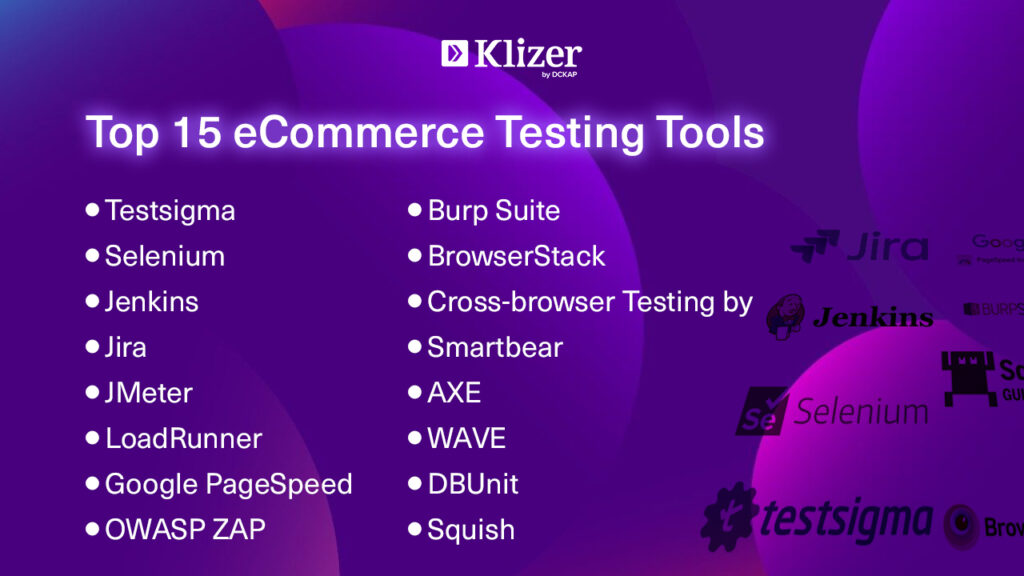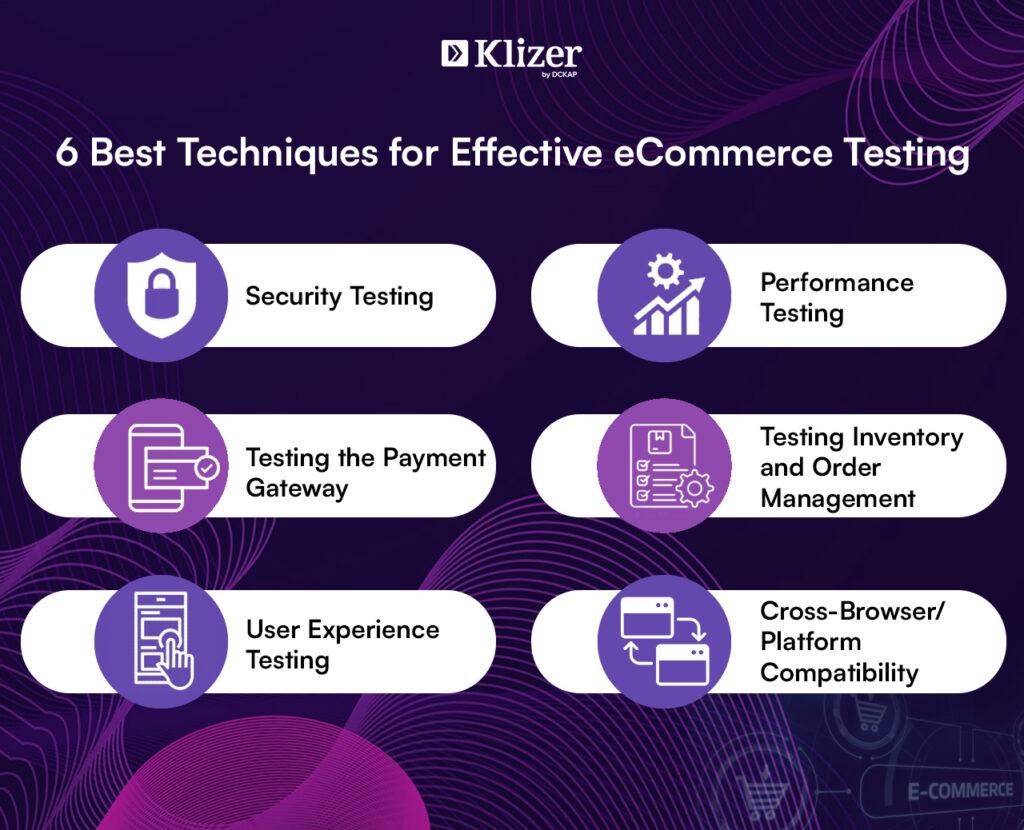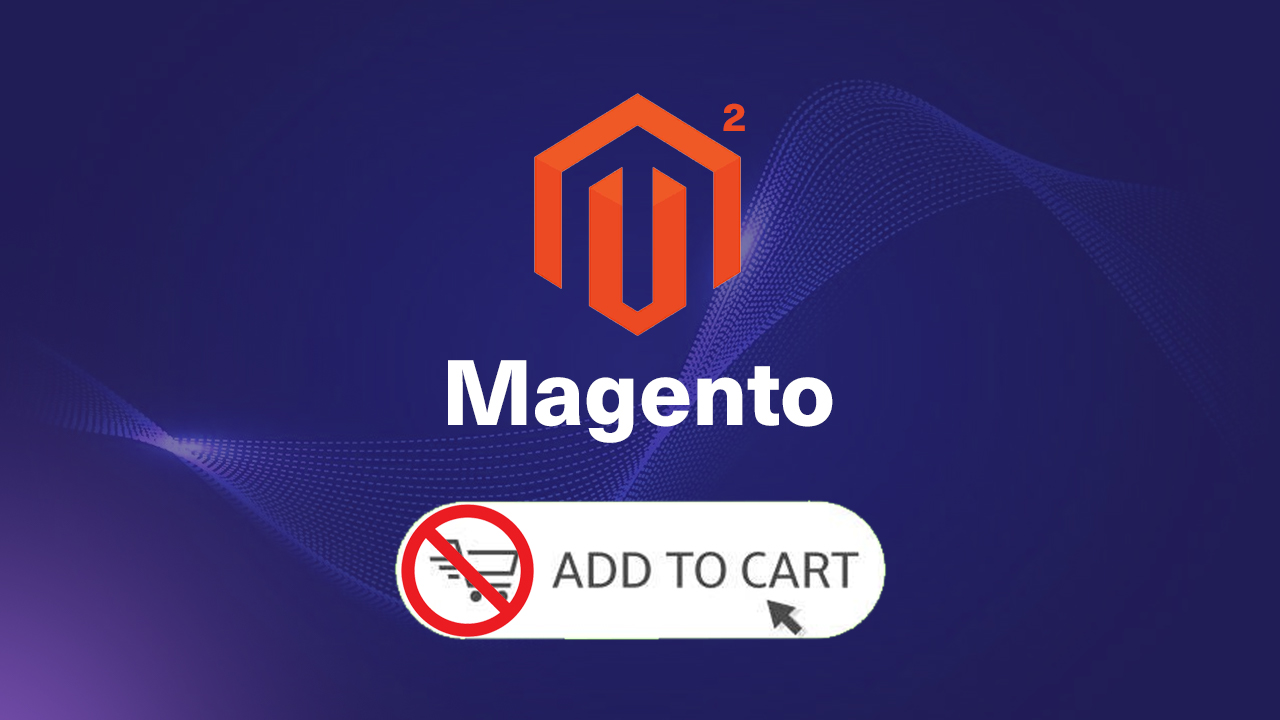eCommerce testing is essential to ensure that online stores run smoothly and provide a seamless shopping experience for customers. It helps identify and fix issues related to functionality, performance, security, and user experience, which improves customer satisfaction and boosts sales.
In this blog, we will explore the best ecommerce testing tools that can help you optimize your website and enhance its performance across various devices and platforms.
ON THIS PAGE
Top 15 eCommerce Testing Tools You Should Know
eCommerce Testing tools can help you identify and rectify issues related to shopping carts, page load times, conversion rates, and more, ultimately leading to improved customer satisfaction and higher conversion rates.

1. Testsigma
Being an all-in-one test automation tool, TestSigma emphasizes codeless test automation, making it accessible to both technical and non-technical users.
From testing product search functionality to validating the checkout process, TestSigma typically offers customer support and documentation to assist users.
It simplifies the task so you can focus on providing your customers with a seamless shopping experience.
Features
- Testsigma uses artificial intelligence (AI) to create self-healing tests.
- You can also automate web, mobile, and API testing while supporting thousands of device/OS/browser combinations on-premises and in the cloud.
- As Testsigma is completely cloud-based, you can write, debug, and run your tests.
- Testsigma offers built-in test data management capabilities, including data-driven testing, parameterization, and dynamic data generation.
2. Selenium
It is a tool that automates testing in many web browsers. As the tool is open source, it is available to multiple users and organizations without significant license fees.
Selenium is not a single tool but a collection of software, each serving different testing needs of an organization. There are four components:
- Selenium Integrated Development Environment (IDE)
- Selenium Remote Control (RC)
- Selenium web driver
- selenium network
Features
- Selenium WebDriver supports multiple browsers, including Google Chrome, Mozilla Firefox, Safari, and Internet Explorer, so you can automate cross-browser testing.
- It can be integrated with various test frameworks and tools, enabling more advanced test cases and reporting capabilities.
- Selenium easily integrates with popular CI/CD pipelines, facilitating automated testing in DevOps workflows.
3. Jenkins
Jenkins is an open-source tool that is generally available without royalties. It can automate the build, test, and deployment process to reduce manual intervention and human errors.
Security is a critical aspect of this automation tool, especially when managing software delivery pipelines and handling sensitive data.
Features
- It offers an extensive plugin library that allows users to customize and extend functionality according to their needs.
- It enables continuous integration of code changes and automatically triggers builds and tests as new code is committed to your version control system.
- This ensures that the latest code base is tested so that bugs can be identified and fixed quickly.
4. Jira
Jira is a versatile project management and issue-tracking tool that offers numerous benefits to testers.
Jira is now the primary software development tool used by agile teams. As adoption grows, more and more companies are adopting JIRA.
JIRA can be used:
- In Agile methodology.
- Requirements and test case management.
- Project management.
- Product management.
- Task management.
- Issue/Bug management.
Features
- Jira reporting capabilities have been expanded to include advanced reporting tools such as Jira Query Language (JKL) and custom dashboards.
- Jira gives you the ability to select fields and screen layouts based on your needs.
- Jira is suitable for agile and Scrum methodologies.
- Testers can use agile charts, sprint planning, and backlog management to organize and prioritize testing activities.
Performance Testing
Performance testing carefully examines the performance characteristics of an application and provides valuable information about its speed, stability, scalability, and responsiveness under various conditions.
Here are some tools available in the market that help achieve effective performance testing.
5. JMeter
JMeter is a popular open-source Java-based performance testing tool that performs log-based load testing of various web services and software.
The framework enables multi-threading. It means that multiple separate groups of threads can simultaneously test APIs (SOAP and REST), web applications, and other web services.
Features
- JMeter provides an easy-to-use graphical interface for creating and configuring test plans, making it accessible to testers with varying levels of technical expertise.
- It is very comprehensive and supports different server types and different protocols.
- This testing tool monitors test execution in real-time and generates test reports in various formats.
6. LoadRunner
Micro Focus LoadRunner is an advanced software testing tool. It analyzes web application performance issues. It also provides efficient tool tracking and optimum use of load generation groups.
LoadRunner allows testers to author and simulate realistic user interactions such as login sessions, form submissions, and web application navigation.
Features
- LoadRunner supports a variety of protocols, including HTTP/HTTPS, SOAP, REST, JDBC, Citrix, and WebSockets.
- It also has Web 2.0 technology.
- It has advanced forecasting capabilities to estimate capacity expansion costs.
- It optimizes existing ERP software and system applications.
- It completes visibility into end-to-end system performance.
- LoadRunner’s comprehensive protocol support, scalability, scripting capabilities, and integrated performance analysis make it an advanced and powerful load-testing tool for evaluating application performance, system reliability, and performance.
Read Also: Top 10 Mobile App Testing Tools
7. Google PageSpeed
This is the classic Google tool for measuring web performance. One of its benefits is that it not only provides a detailed description of your site’s loading speed but also offers suggestions to make the page faster.
Features
- Optimization recommendations are based on general web performance metrics, including resource caching, data loading, and download size.
Security Testing
Security testing ensures that customer data, such as personal information, payment details, and login credentials, is protected from unauthorized access or compromise.
eCommerce websites must comply with PCI-DSS requirements to securely process payment card data. Security testing helps meet these compliance standards.
This test verifies user session and cookie management to prevent session manipulation, hijacking, or new attacks.
8. OWASP ZAP
ZAP supports active scanning (actively checking applications for vulnerabilities) and passive scanning (monitoring traffic for potential problems) to identify vulnerabilities.
Features
- It enables automated security testing by integrating into software development lifecycle (SDLC) and continuous integration/deployment (CI/CD) processes.
- It is a DAST tool. So, test your app in action, just like a real attacker would. It helps find vulnerabilities that are not obvious through static analysis.
9. Burp Suite
Burp Suite is one of the most popular penetration testing software which is very useful for ethical hackers, penetration testers, and security enthusiasts.
Tools included in the Burp Suite include Spider, Proxy, and Intrumer.
Burp Suite is a comprehensive web browser that covers a wide range of security issues, including SQL injection, cross-platform scripting (XSS), cross-platform scripting (CSRF), and more.
Features
- Six active Kuurt options are available for automatic weaving operations. They can help you with all your security and safety monitoring needs.
- Strengthen Toybefadian by supporting coordination between Toybe members when coordination between Toybe members becomes difficult due to deception and snobbery.
- Burp Suite provides analytical tools for web applications to scan complex data collections automatically.
- Create Satata Sir and add Sasa Kal to Urigatai, Avadi, and modification. These reports will be used to resolve disputes with Tôyre tívelis and Geallshollellari.
- Integrate with multiple stakeholders, from system management systems to product/product delivery lines (CI/CD).
10. Cross-browser Testing
Cross-browser testing tools are essential to ensure that websites and web applications work consistently and correctly across different web browsers.
Testing tools can help you evaluate how your website responds to the different screen sizes and resolutions required for mobile and responsive design.
11. BrowserStack
BrowserStack provides access to multiple web browsers, browser versions, and real-world operating systems, allowing testers to perform comprehensive cross-browser testing.
It includes popular browsers such as Chrome, Firefox, Safari, Edge, and Internet Explorer.
Features
- It has the ability to take screenshots and record video sessions during testing, making it easier to document and report issues.
- Parallel testing capabilities allow users to test on multiple browsers and devices simultaneously, reducing testing time and speeding up the development process.
- This platform enables automated testing using Selenium and Appium and provides a framework for creating and running tests across multiple browsers and devices.
- The platform improves the accuracy of cross-browser testing by supporting visual tests that identify visual inconsistencies and differences between different browser versions.
- It provides an API that enables programmatic control and integration with testing processes and tools.
12. Cross-browser Testing by Smartbear
Modern test automation tools integrate browserless testing functionality and support both in-browser and out-of-browser integration testing.
Internet Explorer 10, Mozilla Firefox, and Google Chrome are also supported. Additionally, you get versatile testing capabilities to run cross-browser tests on multiple computers and use different browsers simultaneously.
Features
- CrossBrowserTesting.com is a web service that includes web functionality and unit testing across browsers, mobile devices, and desktop computers.
- These two versions are the latest web browsers to support Android and iOS mobile features on Windows, Mac, and Ubuntu desktop systems.
- CrossBrowserTesting supports parallel testing, allowing users to test on multiple browsers and devices simultaneously, significantly reducing testing time.
- It allows testers to test applications hosted in a local development environment and ensure testing accuracy during development.
- Live testing enables real-time testing sessions that allow testers to interact with web applications in a live environment, making it easier to diagnose issues and test functionality.
- CrossBrowserTesting includes element inspection tools that analyze a web page’s elements, style, and HTML structure to help identify DOM issues.
Accessibility Testing
Ensuring accessibility compliance is a legal requirement in many countries including the Americans with Disabilities Act (ADA) and the Web Content Accessibility Guidelines (WCAG) in some jurisdictions.
Among various testing methods, accessibility testing is important as it focuses on the application usability.
Accessibility allows organizations to reach a wider audience, including people with disabilities, older adults, and users of assistive devices.
13. AXE
Axe from Deque Systems is a widely used and valued accessibility testing tool. If you are looking for an effective website accessibility tool, Axe is the best choice.
Axe is an open-source testing tool that is freely available to developers and testers.
It provides a comprehensive set of access controls based on the Web Content Accessibility Guidelines (WCAG), covering a wide range of accessibility issues.
Features
- It works with all modern browsers and supports static devices, memory integration testing, and unlimited depth iframes. It is designed to work with any library, platform, framework, or tool.
- Developers and testers receive real-time feedback as they interact with web applications, allowing them to identify and resolve issues early in the development process.
- Axe integrates with other popular testing tools and frameworks such as Selenium and TestCafe, enabling seamless accessibility testing within your existing workflow.
- A version for manual accessibility testing is also included.
14. WAVE
WAVE (Web Accessibility Assessment Tool) is a commonly used web accessibility testing tool by WebAIM.
WAVE is a website accessibility assessment tool that helps websites create accessible content.
It is a free community tool designed to facilitate web accessibility by allowing developers to post issues directly to the site.
Features
- Available as a tool and browser extension for Chrome and Firefox it stores no data on the server.
- WAVE evaluates the accessibility of websites by analyzing the web model.
- It is a browser-based tool that evaluates issues from color mismatch to ARIA attributes and is based on Part 508 and WCAG compliance standards.
- It not only checks accessibility but also provides users with suggestions to resolve accessibility issues.
- This tool helps you create responsive content by evaluating color contrast and providing advice on text readability.
- WebAIM, the organization behind WAVE, provides extensive educational resources such as tutorials, articles, and webinars to help users understand and resolve accessibility issues.
Recommended Read: eCommerce ADA Compliance
Database Testing
Database testing is an important part of a reliable database program, which ensures that the data portion of the application is working correctly and that the data contained in the application remains accurate, consistent, secure, and functional.
Through the database process, you can evaluate the integrity and reliability of the data, the performance, and the functionalities wrapped around it.
15. DBUnit
DBUnit is a Java-based tool that helps organize test data and validate database results. It is an open-source database testing framework that addresses a wide range of testing needs.
DBUnit ensures data consistency so you can create and maintain a consistent database state across multiple tests. You can compare the expected results with the current state of the database.
Developers can use dbUnit to populate database-specific data before running unit tests to test the specified data.
Features
- It can be used with various databases such as MySQL, Oracle, and Microsoft SQL Server.
- It supports batch testing, which allows developers to run multiple test cases on different databases at the same time.
- When testing sensitive data, DBUnit anonymizes or masks the data to ensure privacy and security.
- You can tailor its functionality with your extensions and plugins to meet your specific testing needs as it is extensible.
Tool for Data Driven Testing (DDT)
16. Squish
Squish is a commercial cross-platform regression testing GUI tool. You can test applications based on various GUI technologies.
Squish supports the automation of web, desktop, QT, embedded, and mobile applications.
Squish works by turning actions performed in the GUI into scripts. These scripts are automatically read one after the other.
Features
- It can repeat the test script with different input values.
- It can quickly test how your application handles bulk data entry.
- It can separate the test data (input and output values) from the actual test script.
- Store test data in one or more primary data sources and share it between test cases.
Also Read: eCommerce Automation Testing
Additional Ecommerce Testing Tools (Bonus)
1. VWO
VWO is a popular A/B testing tool that can be used to test and optimize ecommerce websites and applications.
VWO can help businesses to improve their conversion rates and increase sales.
Key features:
- User-friendly, even for novices.
- It provides detailed insights into user behavior.
- It supports a variety of different testing types, including A/B testing, multivariate testing, and split URL testing
2. SoapUI
SoapUI is an open-source API testing tool that supports a wide range of different API technologies.
SoapUI is a good choice for businesses looking for a free and easy-to-use API testing solution.
Key features:
- Free and open-source testing tool.
- It supports a wide range of different API technologies.
- It provides a comprehensive set of API testing features.
- Extensive documentation and community support.
3. Postman
Postman is a popular API testing tool that is easy to use, even for beginners.
Postman is a good choice for businesses that are looking for a comprehensive and easy-to-use API testing solution.
Key features:
- It offers extensive capabilities for API testing.
- Comprehensive documentation and support from the community.
6 Best Techniques for Effective eCommerce Testing

1. Security Testing
Security breaches can result in the exposure of customer information, leading to identity theft, fraud, and legal consequences. Testing helps identify vulnerabilities and ensures customer data remains confidential.
2. Performance Testing
A slow or unresponsive website can frustrate customers, leading to cart abandonment and lost sales. Performance testing helps ensure that your site provides a smooth and enjoyable shopping experience.
3. Testing the Payment Gateway
It is essential to ensure that the payment process is smooth and protected. QAs need to test different payment methods with currencies and transaction scenarios.
4. Inventory and Order Management
Verify that inventory levels are precise and orders are processed correctly and it’s mandatory to contain test cases for product availability, order fulfillment, and order tracking.
5. User Experience Testing
The success of ecommerce largely depends on providing an exceptional user experience. Testers should focus on usability, accessibility, and responsiveness across multiple devices and browsers.
6. Cross-Browser/Platform Compatibility
Test your application in different browser/device combinations to ensure consistent performance and appearance. The customers access the website across multiple devices and browsers.
Why You Need to Perform eCommerce Testing?
Studies show that 40% of visitors will leave a site if it takes more than 3 seconds to load. Even a one-second delay can cause a 7% drop in conversions and an 11% decrease in website visits. For a business earning $200,000 per day, that delay could lead to a $5 million loss in annual sales.
Testing your ecommerce website helps ensure it runs smoothly and performs well, which can increase sales and improve customer satisfaction. Regular ecommerce testing tools are necessary, as they help you measure and fix performance issues before they affect your business.
Enhancing Your Online Store’s Performance with eCommerce Testing Tools
eCommerce testing tools help identify and fix issues that can affect user experience, speed, and functionality. By improving performance, you boost conversions and customer satisfaction. Regular testing ensures your site stays optimized, preventing potential losses.
Klizer is the best ecommerce testing agency and their expert ecommerce QA services will help you maintain a high-performing, seamless online store.
Contact us for an expert consultation!
FAQs
1. What is the significance of testing page load time in ecommerce?
Page load time is crucial in ecommerce because it directly affects the user experience. Slow-loading pages can deter potential customers and lead to higher bounce rates. Testing page load time ensures that your website performs optimally and provides a seamless shopping experience.
2. Why should I focus on mobile phones in ecommerce testing?
Mobile devices are increasingly used for online shopping. Ensuring that your ecommerce store is mobile-friendly is essential to capture a broader customer base. Testing on mobile phones guarantees that your website is responsive and functions well on various devices.
3. How can ecommerce testing tools improve website performance?
Ecommerce testing tools can identify and rectify issues related to website speed and performance. By pinpointing bottlenecks and areas for improvement, these tools help optimize your site’s speed and overall performance, resulting in a better user experience and higher conversion rates.
4. What are the advantages of using free tools for ecommerce testing?
Free testing tools can be cost-effective and suitable for smaller businesses with budget constraints. They often offer basic testing capabilities, such as functional testing or basic performance testing, helping you get started with improving your ecommerce site without a significant financial investment.
5. How can ecommerce testing tools benefit my ecommerce platform?
These tools play a vital role in enhancing the quality and reliability of your ecommerce platform. They help you identify and eliminate issues, ensuring that your platform runs smoothly, and customers can shop without disruptions, leading to increased customer satisfaction and, ultimately, higher revenue.
6. What is the difference between ecommerce website testing tools and ecommerce automation testing tools?
Ecommerce website testing tools focus on assessing the functionality, user experience, and performance of your website manually. In contrast, ecommerce automation testing tools automate the testing process, making it more efficient and scalable by running predefined test scenarios. The choice between them depends on your specific testing needs and resources.
7. How can ecommerce testing tools help in optimizing the product details page?
Ecommerce testing tools can be used to evaluate the product details page, ensuring that it displays accurate product information and images. They also help identify and fix any issues related to layout, content, or functionality, ultimately improving the quality of this critical page on your website.
8. Why is it essential to conduct different types of ecommerce testing?
Different types of ecommerce testing, such as functional, performance, and mobile app testing, address various aspects of your website’s functionality and user experience. A comprehensive approach ensures that your site operates smoothly under different conditions and provides a satisfying shopping experience for customers.
9. How can ecommerce testing tools help in generating performance reports?
Ecommerce testing tools can collect data on the performance of your website during testing. They use this data to generate performance reports, providing insights into areas that need improvement. These reports serve as a valuable resource for optimizing your website’s speed, functionality, and overall performance.
10. Why is ecommerce testing essential for a retail business?
In the highly competitive world of online retail, eCommerce testing ensures that your website functions flawlessly, delivering an excellent customer experience. This, in turn, leads to higher customer satisfaction, increased conversion rates, and ultimately, greater revenue for your retail business.
11. How does testing for high speed benefit my ecommerce application?
Testing for high speed ensures that your ecommerce application can handle heavy loads and peak times efficiently. This prevents slowdowns or crashes during periods of high traffic, which is critical for maintaining a positive customer experience and avoiding potential revenue loss.








